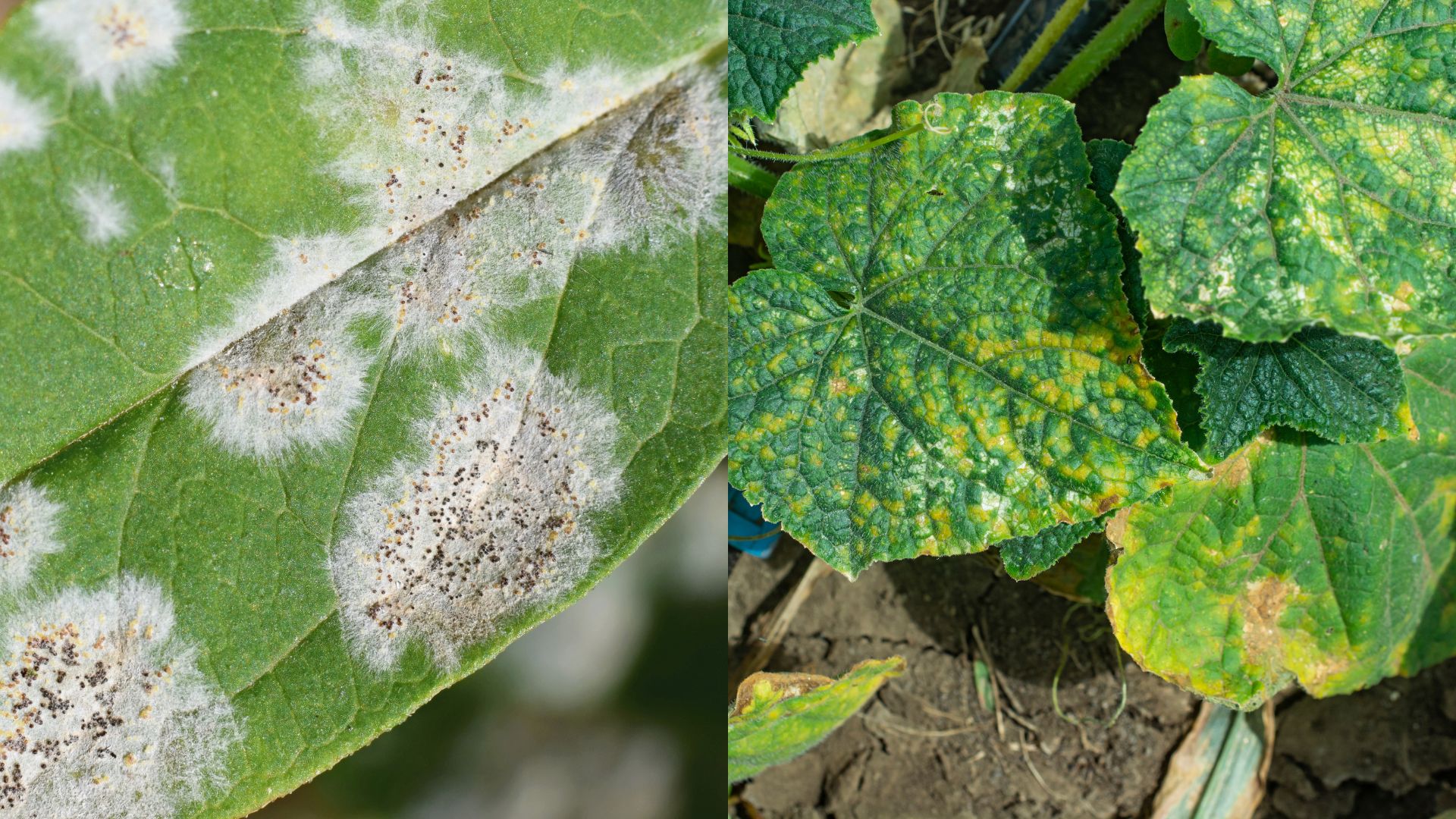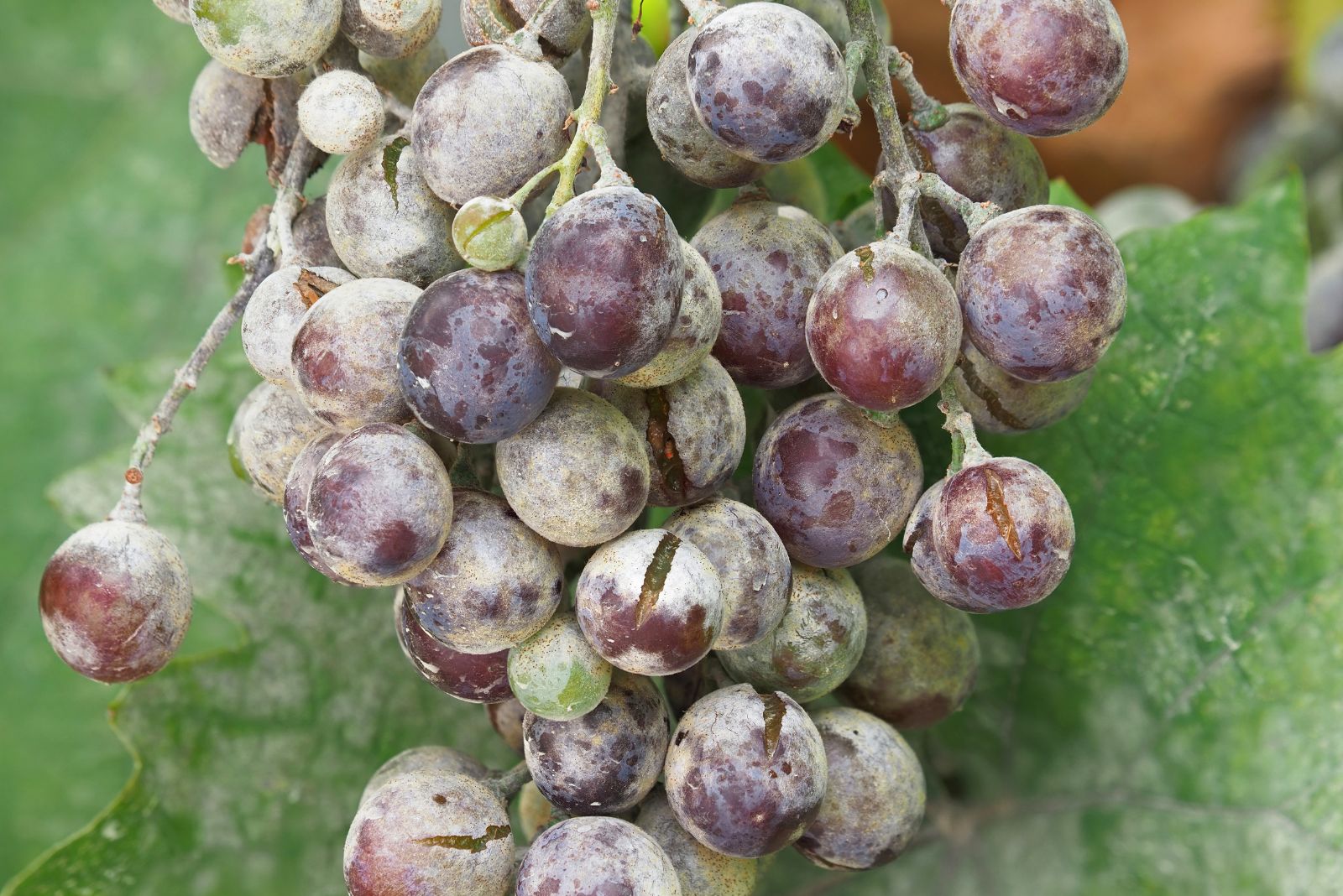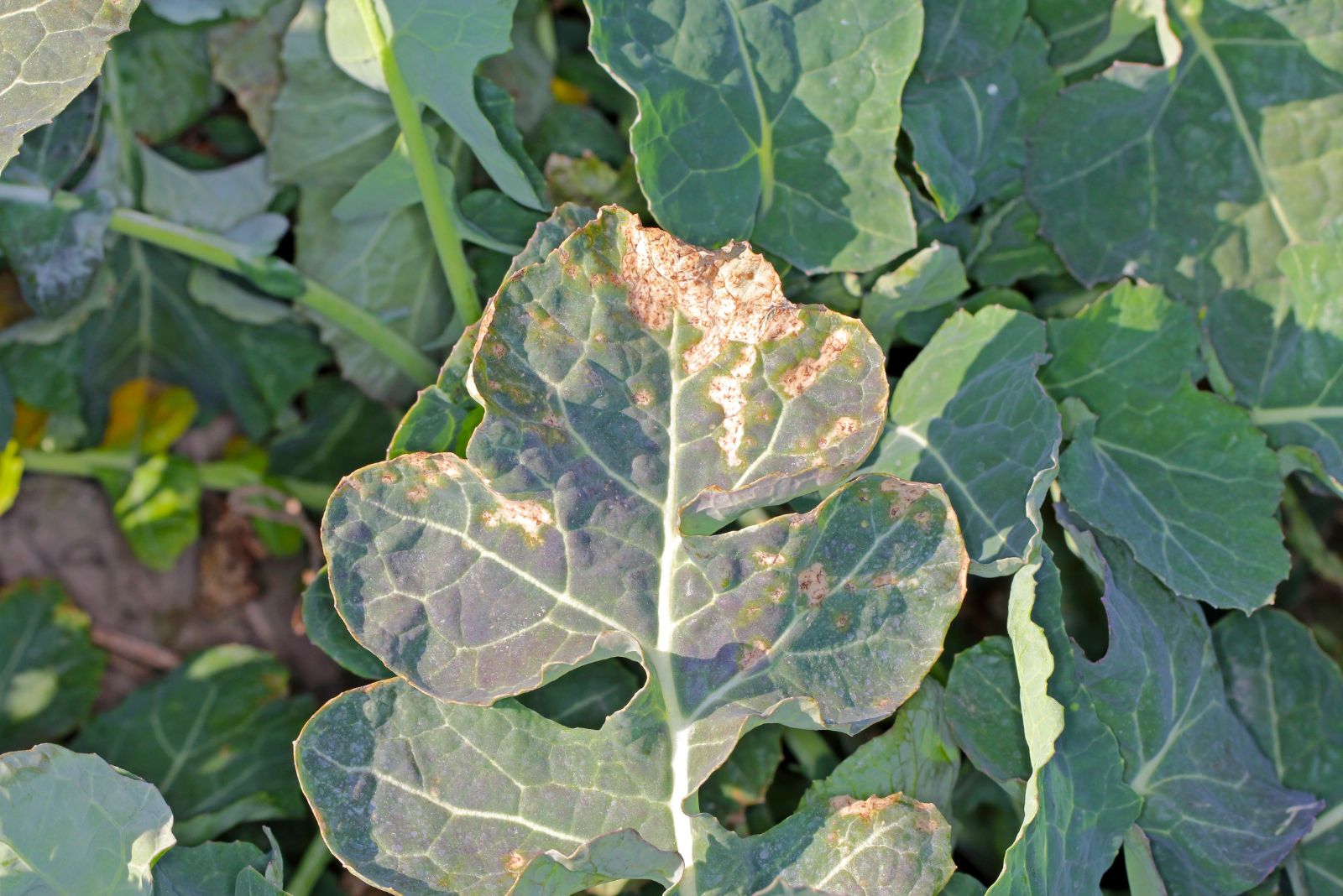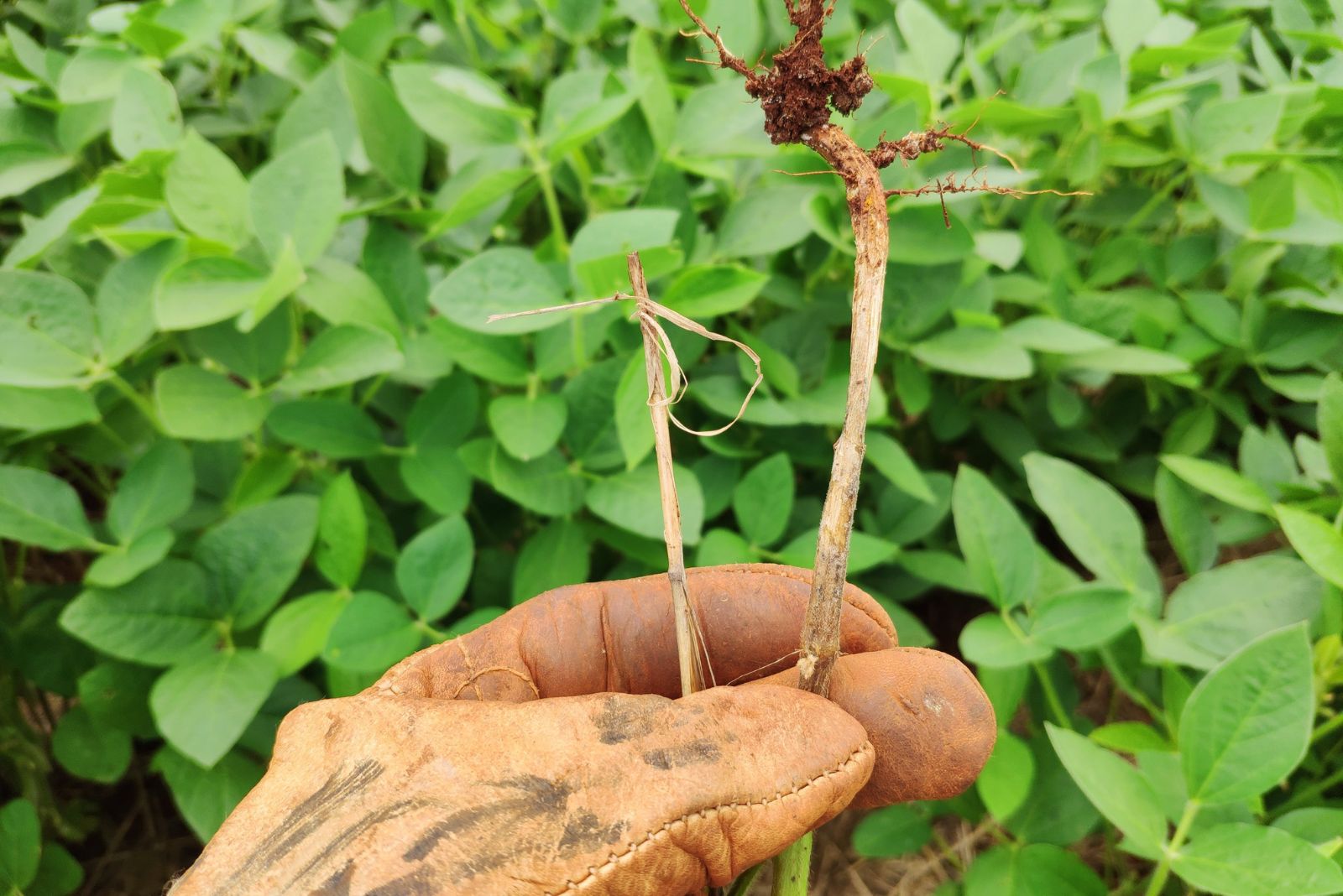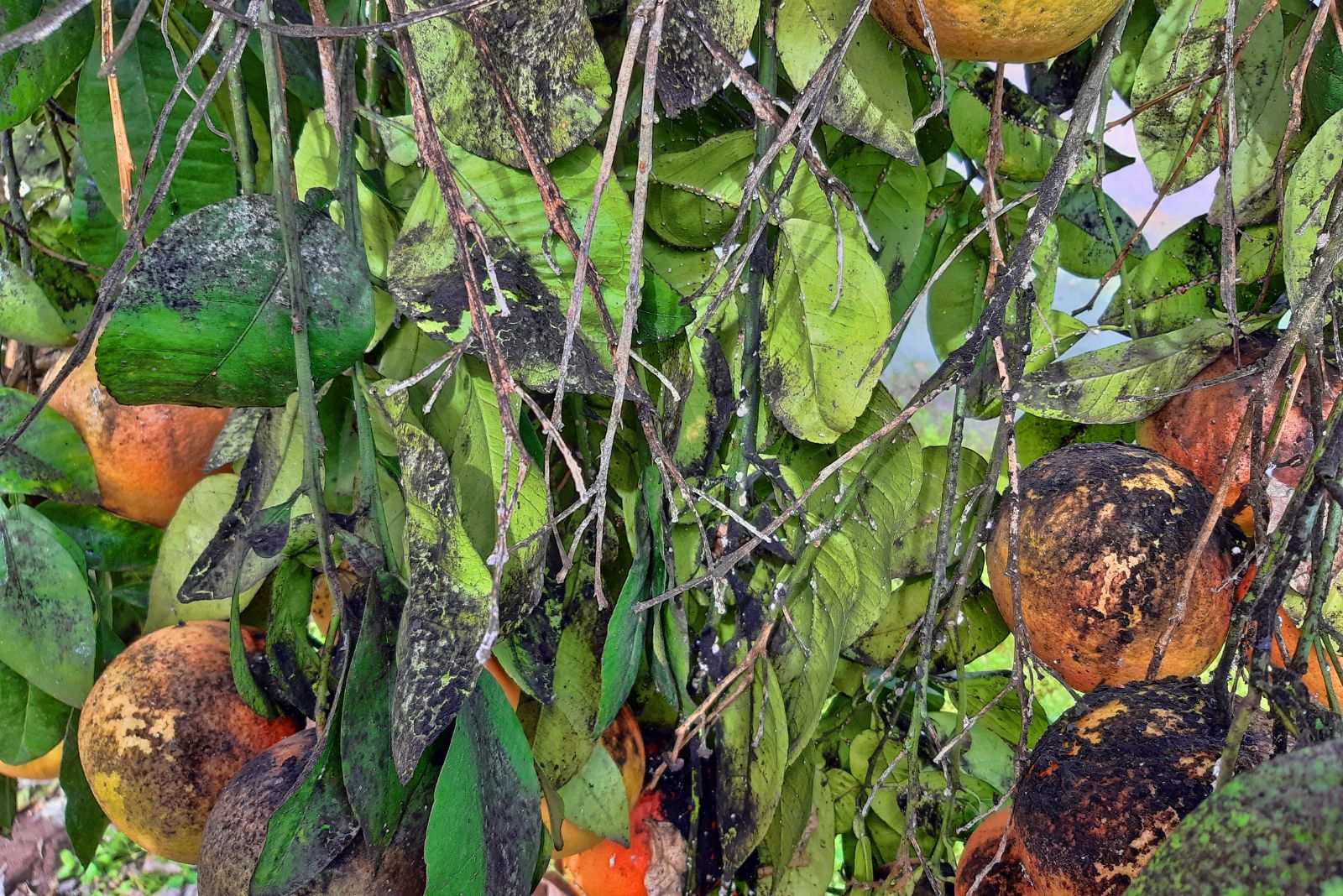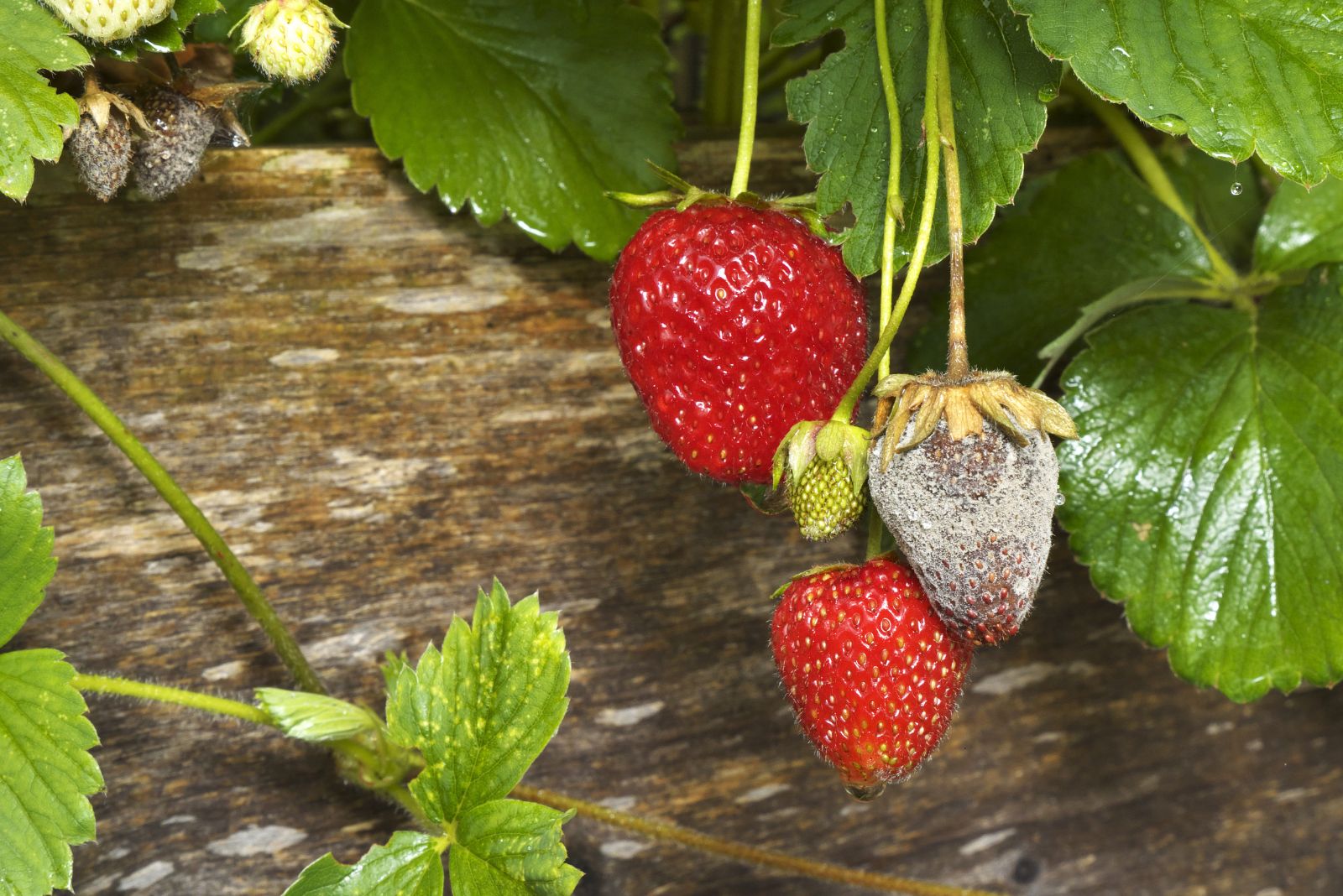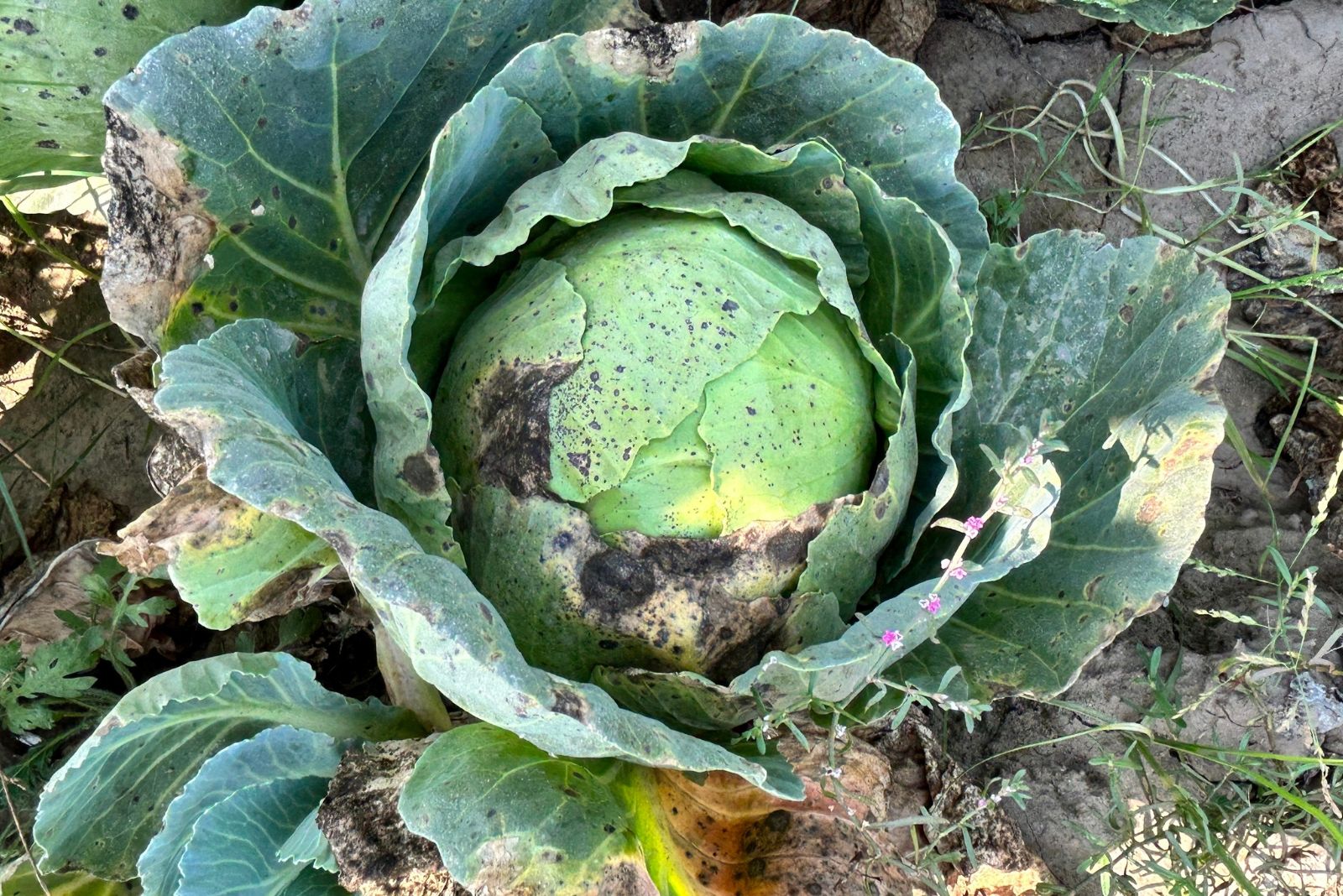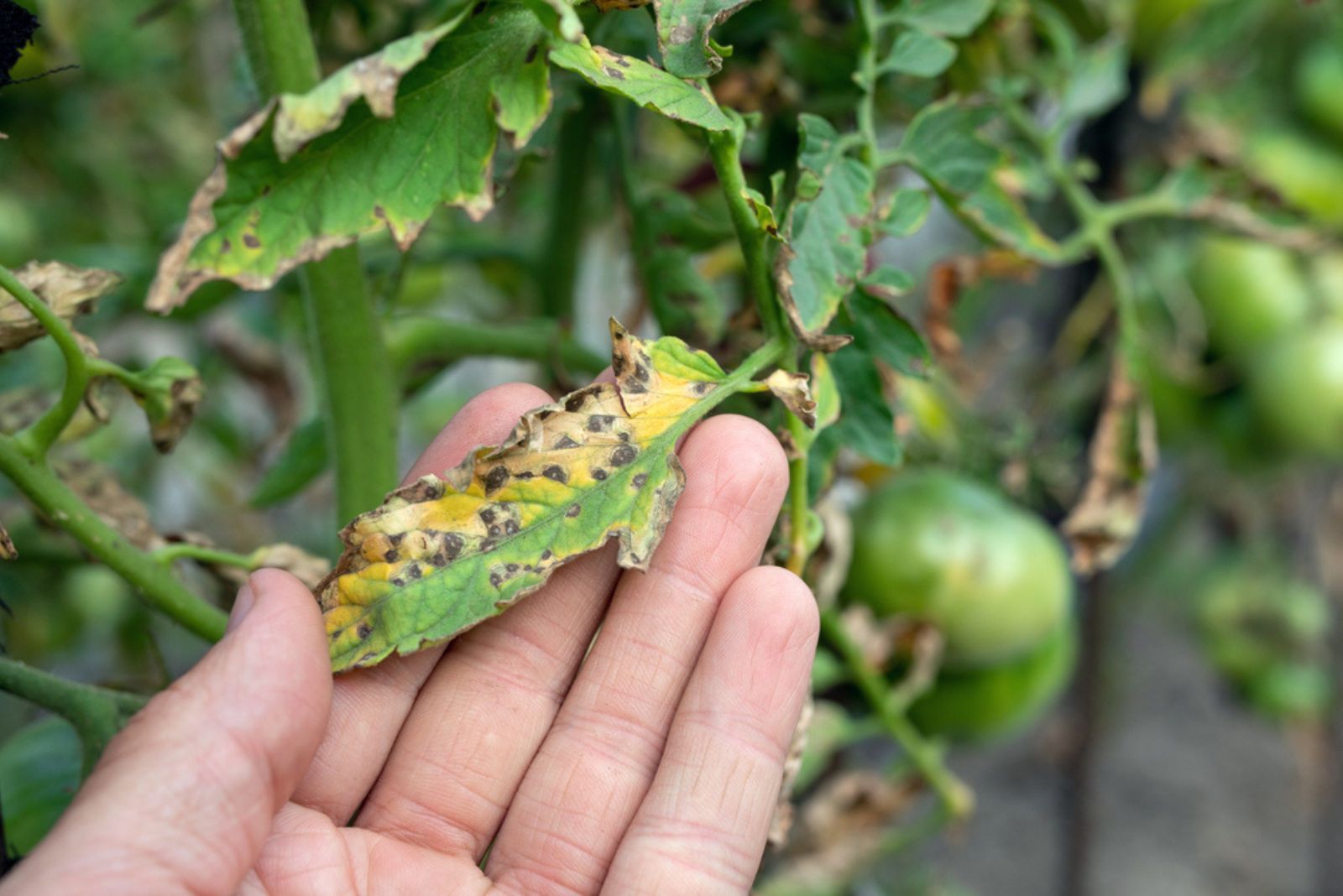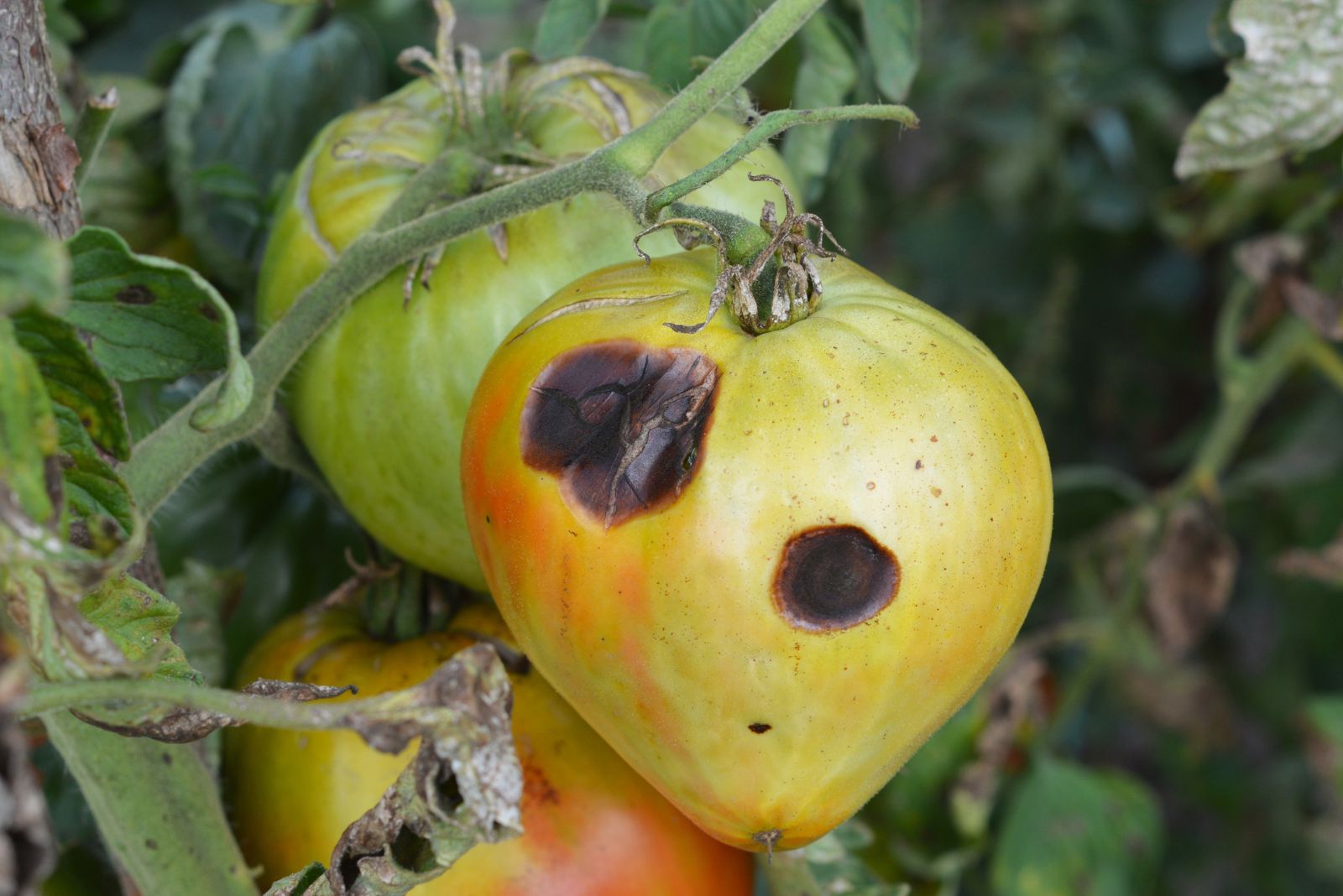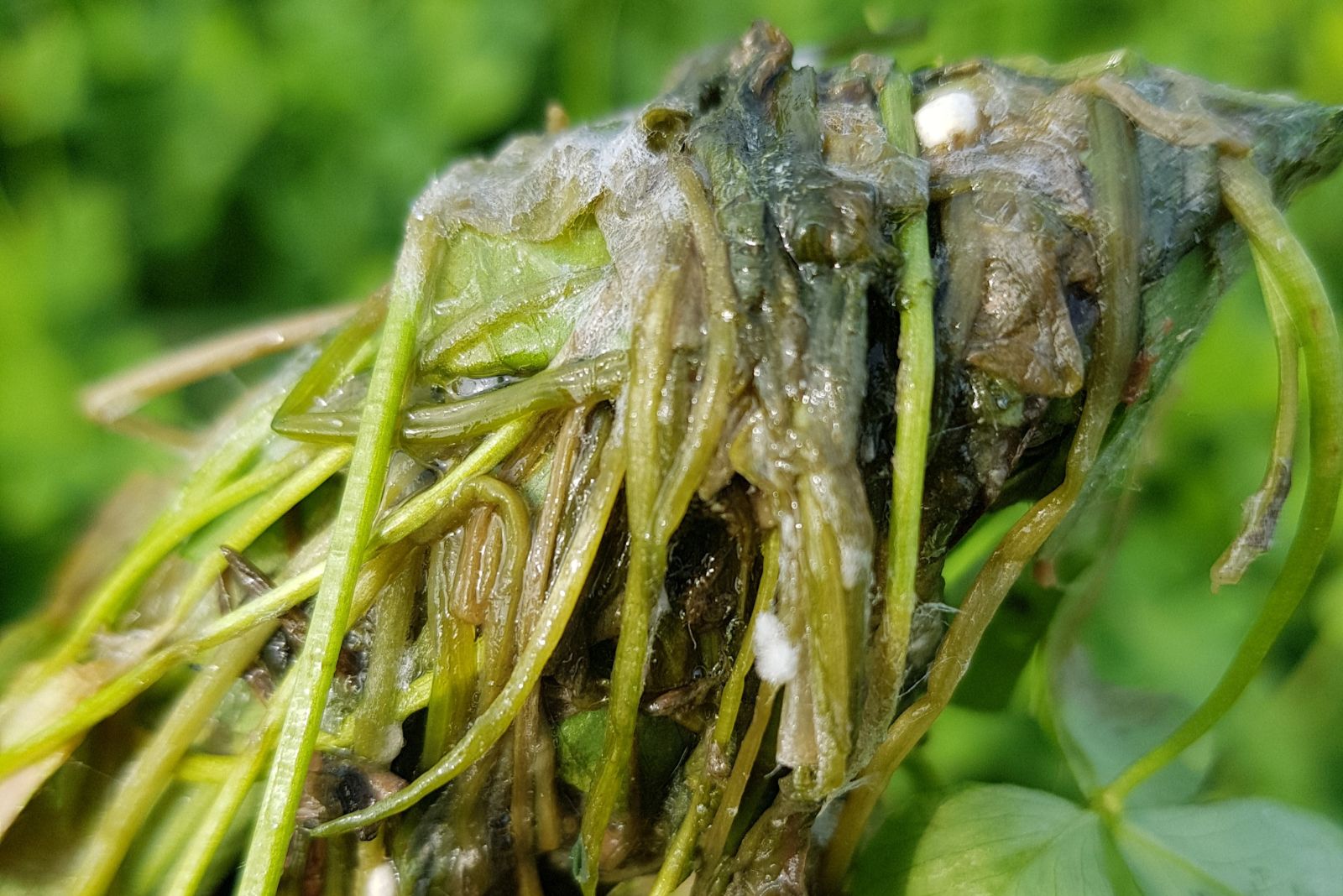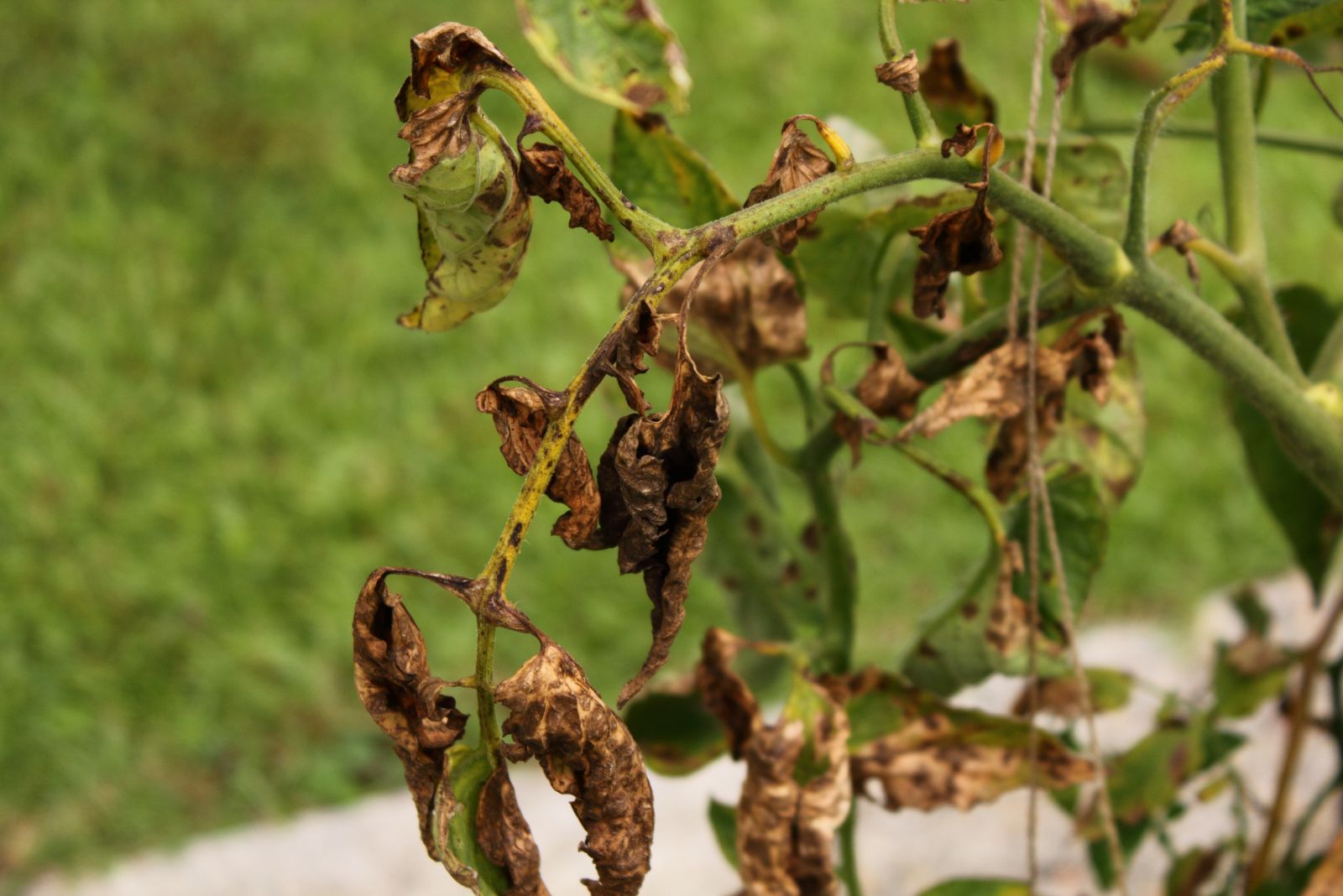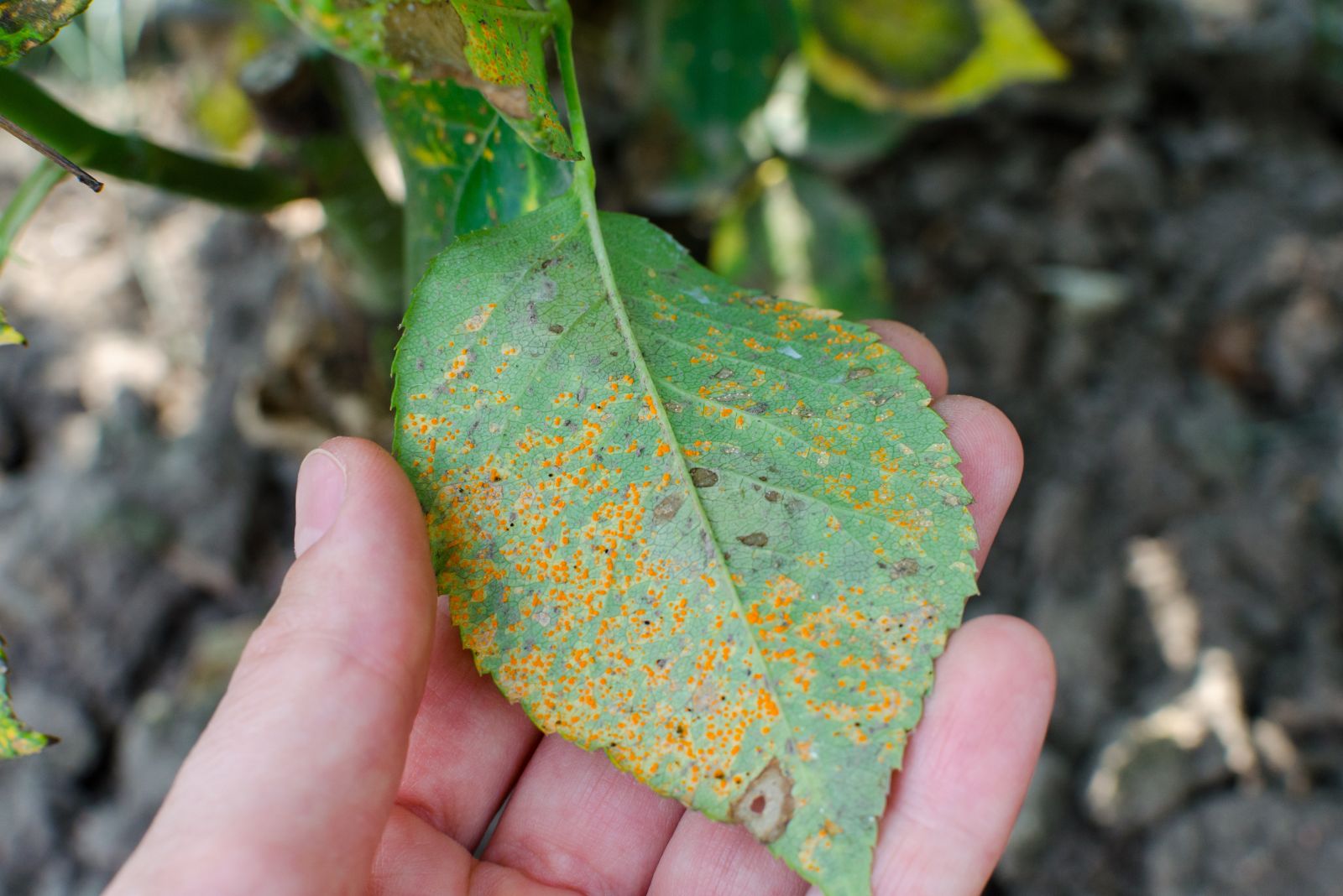Discolored or deformed leaves, or any other plant parts, are a nightmare for every gardener. Even though the condition that led to these changes doesn’t have to be lethal, there are some situations that should concern you.
The best examples are garden fungal diseases that weaken the plant and may even kill it if left untreated. The hardest part is to determine which disease your plant is dealing with.
In this article, I’ll show you how to identify and treat common garden fungal diseases and give you some pro tips on how to prevent them.
Let’s get started!
1. Powdery Mildew
There’s one essential thing to discuss about powdery mildew. This isn’t a single disease but rather a term used to describe a group of fungal species. (1)
Each of these species will affect a specific plant. The biggest problem with powdery mildew is that the fungi that cause them can survive in various conditions, so it’s hard to prevent it.
Let’s see how to recognize, prevent, and treat this disease.
Identification
The word “powdery” actually reveals a lot about the symptoms. If your plant suffers from this disease, a white powderish substance will occur on the surface of the leaves.
First, you’ll notice spots on the leaves; white spots on cucumber leaves are the telltale sign of powdery mildew.
Then, the substance will spread and cover the surface and the leaves will get discolored and die. Of course, this occurs only if you don’t prevent or treat your plant.
Prevention
Unfortunately, you can’t prevent this disease by keeping the leaves dry. These fungi can survive in both dry and wet conditions.
Some of the ways to prevent powdery mildew include ensuring good air circulation between the plants and giving them a lot of full sun.
A common and efficient way to prevent this disease is to purchase resistant varieties.
Treatment
One of the methods we use for powdery mildew treatment is neem oil application. Other horticultural oils can also be used but neem oil definitely wins.
The only thing to pay attention to, if you decide on this method, is not to apply any type of oil if the temperatures are above 90 degrees Fahrenheit.
2. Downy Mildew
Scientifically speaking, this isn’t a fungal disease but rather a water mold. (2) In the eyes of the majority of growers, this condition is still seen as a fungal disease.
I believe that’s because of the damage this disease causes to our precious plants. The fungus-like organism that causes downy mildew thrives in humid and moist conditions. This is one of the most common summer plant diseases.
Identification
If there are some water-soaked lesions on the undersides of the plant leaves, you may be dealing with downy mildew.
The spots will eventually occur on the surface of the leaves and turn brown or yellow.
If you don’t treat it, the leaves will develop a fuzzy coating that can be gray or brown.
Prevention
As mentioned, this disease typically occurs in humid and wet conditions. Our first goal is to keep the foliage dry, so never pour water over them when watering your plants.
Drip irrigation systems can help you avoid this issue. You should increase air circulation between your plants by ensuring adequate spacing and pruning compact plants.
Choosing downy mildew-resistant plants is another way to avoid this disease.
Some gardeners who live in humid and wet climates cultivate their plants in high tunnels to keep the leaves dry and decrease susceptibility to downy mildew.
Treatment
Unfortunately, the only way to treat this disease is by applying fungicides, such as copper and sulfur fungicides.
Copper is definitely a better option but it won’t cure the tissue. Instead, it will prevent the infection from spreading. You will most likely need to reapply it every week for full recovery.
Be careful if you use horticultural oils or neem oil and never use them in combination with fungicides. This can severely damage leaf tissue and the consequences can be fatal.
3. Rhizoctonia Rot
Another common disease found in garden plants is Rhizoctonia Rot. The fungus that causes it is scientifically referred to as Rhizoctonia solani and infection leads to rotting and seed decay. (3)
Identification
This disease first attacks plant roots and they become covered with reddish-brown spots. Changes in the color or structure of the roots are very hard to notice because everything happens below the soil line.
The infection will soon start spreading to stems and they’ll become droopy. Plants will become discolored and most likely start wilting.
This disease can kill the seedlings before or after they emerge on the soil surface. This condition is commonly referred to as damping off and Rhizoctonia fungus is most frequently the cause, especially if the soil is dry and the temperatures are higher.
Prevention
The fungus typically affects plants if they have open wounds, so the first prevention step is to avoid pruning plants near the soil line.
It’s one of the soilborne fungi, which means you can’t reuse the soil if it’s infected.
Before sowing the seeds, sanitize the seed trays to avoid any fungal growth. Many gardeners apply biological fungicides to the roots to prevent infection.
Treatment
Prevention is actually the only way to avoid Rhizoctonia Rot. Bio fungicides can help but plants die off in most cases.
There are some fungicides that can destroy diseases but they are not organically approved, so that shouldn’t be considered at all.
4. Fusarium Wilt
This is a common fungal disease and it’s caused by pathogens from the Fusarium genus. The disease is frequently found in eggplants, peppers, tomatoes, and basil.
Identification
Limp and wilted foliage is the telltale sign of Fusarium wilt. Wilting is typically displayed during the daytime and it ‘recovers’ over the night.
Leaves can turn yellow in the initial stages of infection. However, it can occur only in some leaf parts, such as leaf tips or a smaller portion on the undersides.
To make sure your plants are suffering from Fusarium wilt, you can peel off a smaller section of the stem; if it’s brown or red, the infection is present.
Prevention
We often purchase transplants from garden centers and they can be infected. One of the ways to prevent Fusarium wilt is to buy transplants only from trusted sellers.
Another common prevention method is purchasing disease-resistant cultivars if possible.
Treatment
Unfortunately, this is another disease that can’t be cured. The best solution is to get rid of the infected plants to protect other plants.
Increasing soil pH has been proven to reduce susceptibility to this disease in some plant species. (4)
5. Sooty Mold
Pests can be detrimental to plants, especially in the case of infestation. Sap-sucking insect species leave honeydew on the plants after feeding and sooty mold steps in. (5)
There are various fungus species that can lead to this disease.
Identification
If you notice a grayish substance on the plant leaves, you may be dealing with sooty mold.
The main problem with this disease is that it won’t kill your plant but it affects photosynthesis.
Plants typically display stunted growth in the case of sooty mold infection.
Prevention
Since pests are the main cause of this disease, the best way to prevent them is to inspect plants regularly and remove pests as soon as you notice any.
Whiteflies, aphids, and mealybugs are just a few of the pest species that can lead to sooty mold.
Common pest control methods include application of horticultural oils and neem oil.
Treatment
Apply neem oil or similar solutions to your infected plants until all the pests are removed.
The fungus typically fades if there aren’t any pests to secrete honeydew.
6. Gray Mold
Otherwise known as Botrytis blight, gray mold is a common garden problem and it mainly affects blooming and fruiting plants. (6) The main problem with this disease is that the spores can be dormant and affect fruits kept in storage.
Identification
Once the plants are infected by gray mold, they’ll develop tiny brown spots on the leaves and stems.
As the disease progresses, the fuzzy grayish substance will cover the plant. Even the fruits can be covered in this substance in the case of severe infection.
This is one of the most common hibiscus plant diseases.
Prevention
The fungus that causes gray mold thrives in humid and cool conditions. Therefore, it’s essential to keep the plants dry, which means you should avoid overhead irrigation. Additionally, you should prune your plants to promote airflow.
This disease mainly affects weak plant parts, such as overripe fruits and discolored foliage.
Harvest your crops on time, remove all discolored plant parts, and get rid of the fallen leaves and blossoms.
Treatment
Infected plant parts don’t recover in most cases. It’s essential to remove all the unhealthy plant parts to protect the healthy ones.
You can also apply a biological fungicide to decrease susceptibility to disease and further spreading.
7. Alternaria
Another fungal disease that affects flowering plants and vegetables is Alternaria. In tomatoes, this disease is referred to as early blight and is caused by the linariae species from the Alternaria genus. (7)
Identification
Irregularly shaped lesions first occur on the plants and they look like tiny water-soaked spots; they can have a dark brown to black coloration.
Some leaves may turn yellow at some point but all the infected parts will eventually turn brown and fall off.
Prevention
The prevention methods for Alternaria are similar to those for other diseases. So, the first step is to purchase disease-resistant cultivars.
Then, make sure to water only around the base of the plant or install a drip irrigation system.
The third and final step is to ensure proper spacing between plants to maintain good air circulation.
Treatment
The best solution for Alternaria is to apply infected plants with a copper fungicide.
Make sure to treat all plant parts to prevent infection from spreading to other plants.
8. Phytophthora
Many gardeners have to deal with crown or root rot in their plants. The main culprits for this disease are fungus species from the Phytophthora genus. (8)
Identification
One of the biggest problems with this disease is that it first affects plant parts below the soil line. This makes it hard to diagnose in its early stages, which means it will be harder to get rid of them.
You’ll first notice wilting and discolored foliage because plant roots are diseased and there’s no water supply for plant parts above the soil line.
Once you take your plants out of the ground, you’ll notice discolored and mushy roots.
The changes that occur on the leaves may also be caused by other diseases. However, if the soil is waterlogged, the Phytophthora fungus is most likely to blame.
Prevention
Keeping the soil overly wet for a long period of time creates a perfect environment for these fungi. Make sure to follow the correct watering schedule for the plants you grow.
It’s also important to loosen the soil before planting or amend it with free-draining materials, especially if you grow plants in containers.
Treatment
If your plants are severely infected by Phytophthora, they most likely won’t recover and you’ll need to remove them from your garden.
But if you spot the disease in time, you can treat your plants with fungicide and change the watering schedule.
9. Septoria Leaf Spot
If you have nightshades in your garden, such as peppers, tomatoes, and eggplants, you may have heard of or dealt with Septoria leaf spot. (9)
Identification
Once the plant is infected, the lower foliage will be covered in tiny round spots. They’re typically brown or dark purple and, in most cases, yellow tissue is present around the spots.
As the disease progresses, all leaves become discolored and eventually fall off.
Prevention
Even though this disease isn’t soilborne, it can persist in plant tissue from one season to another. The main culprit is the infected plant debris.
One way to prevent Septoria leaf spot is to apply a layer of mulch on the soil or cover it with landscape fabric. This protective layer will prevent water splashes from reaching your plants during irrigation.
Purchasing disease-resistant nightshades and installing a drip irrigation system are other ways to prevent Septoria leaf spot.
Treatment
As soon as you notice spots on the lower leaves of your plants, remove each infected leaf.
Applying organic fungicide and copper fungicide can also help you prevent further spreading of the Septoria leaf spot.
10. Anthracnose
This term is used to describe a group of fungal diseases that can occur in various plant species, including turf, flowers, trees, and veggies. (10)
Identification
Symptoms of this disease may vary from plant to plant and also depend on weather conditions.
In trees and shrubs, dark spots, lesions, and leaf dropping are the most common. Veggies display small water-soaked lesions on the crops.
Prevention
Make sure to choose resistant varieties whenever possible.
This disease mainly affects ripe fruits and veggies so make sure to harvest in time.
Avoid overhead watering and make sure there is enough space between each plant when planting. You can add a layer of mulch to plants such as squash to prevent Anthracnose.
Treatment
There’s no way to cure already infected plant parts so it would be best to dispose of them.
You can prune all diseased parts and apply fungicide to prevent further spreading.
11. Sclerotinia Stem and Crown Rot
This disease is also referred to as white mold and sunflowers, cabbage, and tomatoes are some of the plants that can be infected. (11) The fungus which causes the disease prefers moist and cool conditions.
Identification
Any stem that is infected with this disease will display white fuzzy growth. As the disease progresses, these stems will wilt and fall off.
You may also notice water-soaked lesions on plants such as cabbage, and dark spots can also occur.
Prevention
Good airflow and lower humidity decrease susceptibility to Sclerotinia Stem and Crown Rot.
De-weed the planting site to promote air circulation and water only around the base of the plant.
Treatment
Prevention is actually the only thing that can save your plants from Sclerotinia Stem and Crown Rot.
If they’re already infected, there isn’t any cure and you’ll need to discard them.
12. Verticillium Wilt
This disease attacks plant roots and significantly damages the vascular system. It’s found in almost all plant species, including shrubs, flowers, veggies, and trees. (12)
Identification
Wilting is the most frequent sign of Verticillium Wilt and it can affect an entire plant or just certain sections. Yellowing and wrinkling of the leaves can also occur.
The disease is often the cause of a wilted rose or yellowing in cucumber leaves.
Dark streaks can also occur under the outer layer of the stems.
Prevention
If possible, purchase only Verticillium wilt-resistant cultivars. Remove infected plant parts with sterilized tools and employ crop rotation techniques.
Make sure to remove weeds from your garden regularly.
Treatment
Plants that are already infected with Verticillium wilt can’t be cured.
However, you can promote new growth by watering correctly and applying nitrogen-rich fertilizers.
13. Leaf Rust
The last garden fungal disease on our list is leaf rust and it typically affects plant foliage. (13)
Identification
Orange and reddish-brown spots appear on the leaves of infected plants.
As the infection spreads, the entire foliage can be rust-colored.
Prevention
Prevention methods for leaf rust are pretty much the same as for other diseases on this list.
So, grow only leaf rust-resistant varieties, don’t water your plants from above, get rid of all plant debris, and ensure good air circulation.
Treatment
Some plants, such as roses and apples, won’t be in danger if they’re infected with leaf rust. If their leaves don’t fall off, the plants will most likely survive.
If foliage starts dropping, leaf rust may not be the only problem with your plant.
Prune the damaged plant parts and apply neem oil to prevent spreading.
Garden fungal diseases can be detrimental for plants but remember that prevention and early treatment can save your green buddies!
References
1. Powdery Mildews. (2016, February 22). Colorado State University Extension
2. Downy Mildew. (n.d.). Extension | West Virginia University.
3. Rhizoctonia root rot. (2019, July 22). CropWatch.
4. Fang, Xiangling & You, Mingpei & Barbetti, Martin. (2012). Reduced severity and impact of Fusarium wilt on strawberry by manipulation of soil pH, soil organic amendments and crop rotation. European Journal of Plant Pathology.
5. Sooty Mold Management Guidelines–UC IPM. (n.d.).
6. Doubrava, N. (2022, July 20). Gray Mold (Botrytis Blight) | Home & Garden Information Center. Home & Garden Information Center | Clemson University, South Carolina
7. Alternaria – Plant & Pest Diagnostics. (n.d.). Plant & Pest Diagnostics.
8. Phytophthora root and crown rot in the Garden–UC IPM. (n.d.).
9. Septoria Leaf spot. (n.d.). Extension | West Virginia University.
10. Anthracnose Management Guidelines–UC IPM. (n.d.).
11. Sclerotinia stem and crown rot (White mold) / Alfalfa / Agriculture: Pest Management Guidelines / UC Statewide IPM Program (UC IPM). (n.d.).
12. Verticillium wilt. (2023, March 27). Center for Agriculture, Food, and the Environment
13. Leaf Rust. (2019, July 22). CropWatch

